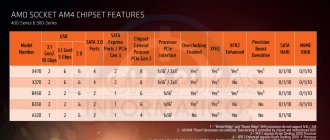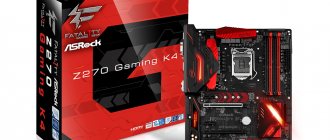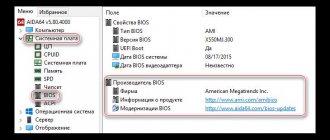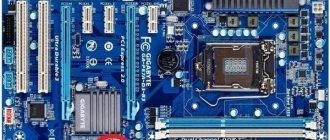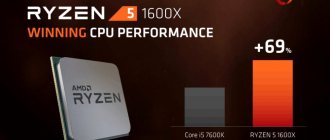Types of Asus motherboards
Modern motherboards are classified depending on the form factor:
- ATX . This format is universal for a board that is suitable for literally any user - from beginners to professionals. This board can be used both on desktop personal computers and on server computers.
- Mini ATX . The Mini ATX motherboard has the same set of functional characteristics as the ATX, only it is slightly smaller in size. Its standard is designed for 6 additional devices.
- Micro ATX . The Micro ATX form factor involves installing the board in a Mini-tower case. It is best to use this model on desktop computers.
- Flex ATX . Also intended for home and office use. These boards are cheaper than all of the above, making them the most budget-friendly option.
- NLX . The NLX standard requires installation of this board in a Mini-tower. It should be noted that it is easy to use, thanks to which there are no difficulties in installing or disconnecting any elements of the board.
How to choose an Asus motherboard?
The choice of motherboard is based on several important indicators:
- Form factor . This parameter characterizes the actual size of the motherboard. First of all, it depends on which computer case it is possible to install a specific model. The most common standards include the following: ATX (305x244 mm), MicroATX (244x244 mm) and Mini-ITX (170x170 mm).
- Chipset . A set of microcircuits, something like an internal controller, which is responsible for the uninterrupted interaction of all elements of the board. The type of chipset determines how much RAM you can install and the ability to overclock the CPU.
- Number of interface connectors . The more inputs there are, the more additional elements can be installed in the system. In addition, some elements (for example, a video card) may occupy 2 slots. The optimal solution is to purchase a board with a supply of interfaces. This will provide room for further improvement.
How not to make a mistake when choosing a motherboard, or expensive motherboards are not needed by most users
Reward accrued
This material was written by a site visitor and was compensated for.
Assembling gaming and multimedia computers for my friends and a large circle of acquaintances, as well as initially correcting, in my opinion, incorrect and unbalanced assemblies, I came to the conclusion that most inexperienced users who assemble a computer for the first time with their own (but most often my) hands are very Often they simply buy inadequate motherboards for their processors and the functionality that will be in demand.
And no, this will not be another article from the category “motherboard market” / “choosing a motherboard” / “which motherboard to buy”, I will simply express a few points about choosing a motherboard for a platform on AM4 or LGA 1151v2/1200, I will not touch on other platforms, both outdated and server-based, or “Chinese”.
announcements and advertising
2080 Super Gigabyte Gaming OC for 60 rubles.
Compeo.ru - the right comp store without any tricks
RTX 2060 becomes cheaper before the arrival of 3xxx
Ryzen 4000
series included in computers already in Citylink
The price of MSI RTX 2070 has collapsed after the announcement of RTX 3xxx
Core i9 10 series is half the price of the same 9 series
The price of memory has been halved in Regard - it’s more expensive everywhere
And again, before reading the material presented here, you should keep in mind that this is just my opinion on this issue, and I do not consider it completely objective and true - it is based on the personal experience of a self-taught amateur who has no technical knowledge. education. You can agree or disagree with these theses, but correcting me in the comments or supplementing the article by stating in your own way the “correct” point of view there is only welcome.
Thesis one: you don’t need an expensive motherboard for a gaming PC if you don’t know how to overclock the processor and RAM
Let's say you are a simple gamer and have an “average budget” to build a gaming PC. Naturally, due to your budget, you focus exclusively on the AM4 platform; you choose a processor between the Ryzen 3 3300X, Ryzen 3 3100X or, oddly enough, the Ryzen 5 3500X, most likely leaning towards the last of the presented copies. In your case, saving on a motherboard means money invested in a more powerful graphics card, which is the main component of a gaming PC. 7,000 rubles for a new motherboard is the extreme cost that you should focus on. But in most cases, successful solutions can turn up for just over 5,000 rubles, such as the popular ASRock B450M Pro4-F motherboard. It's safe to say that you won't notice any difference between a $90 and $150 board if you're just gaming or doing non-processor-dependent work, and you're simply not interested in configuring anything in the BIOS. But buying an SSD instead of a HDD will make your PC much faster in any task. The only thing you should pay attention to when buying such an almost “office” motherboard is the presence of radiators on the VRM, so as not to think about any heating of the “power supply” during games.
Thesis two: buying an expensive motherboard for an upgrade is most often pointless
I am sure that many of you reading this material now have thoughts in your head about buying a motherboard “with an eye to the future.” If you are seriously planning to buy an expensive motherboard (for example, on the X570 chipset), so that later (someday, when everything gets cheaper) you will definitely upgrade to the most multi-core and high-frequency processors, saving on the current processor, RAM or video card, then discard this thought . Let's be honest: in three to five years, the vast majority of users will already have time to give up on their idea of buying a multi-core and high-frequency processor, because there will already be (possibly) more profitable solutions on the market with DDR5 RAM, and updating a platform with already outdated RAM will be at a minimum doubtful. And who would like to sell an expensive motherboard costing over $200 for half the price or even cheaper? Therefore, my opinion is that if you are not an enthusiast and computers are not your hobby and occupation, then consider buying a PC comprehensively, focusing on your needs, buy it for the “here and now”, and not for the “upgrade someday”.
Thesis three: do not overpay for functionality and marketing in the motherboard that you will not need
A large number of SATA ports, several PCI Express slots, the ability to assemble a system with SLI or Crossfire, built-in Bluetooth and Wi-Fi modules, backlighting, the newfangled PCI Express 4.0, more expensive form factors - all these are big names and marketing that will not is in demand if you are not an enthusiast and have no idea how to implement all this functionality. Of course, for many, a motherboard is some kind of decorative item, and if you need a beautiful motherboard, then, of course, take it and pay extra for the appearance. But if you need a PC to just play and surf the Internet, then you should take the simplest board that suits your real requirements, not those imposed by someone, and use the money saved to buy something more important.
Thesis four: most users building a system on AMD Ryzen do not need a motherboard more expensive than 10,000 rubles
Times have changed, and now consumers who just want to “insert and use” are choosing processors from AMD. Intel solutions have retained their interest for enthusiasts due to the possibility of more aggressive overclocking of both RAM and processor. And, since overclocking, which brings serious profit on the AMD platform, has long been gone, there is simply no point in buying an expensive motherboard for the average user. If you are considering buying a processor up to the Ryzen 9 3900 (without the X index and with a small setup) inclusive, and this is 99.9% of potential readers, then you do not need a motherboard more expensive than the same ASUS TUF B450M-PRO GAMING, my opinion about which has already been stated in the previous article. If you're looking to buy a six-core processor (or one with fewer cores), then a budget motherboard with the B450 chipset is all you need.
Thesis five: when assembling a gaming PC on Intel, you will need a relatively expensive motherboard on the Z-chipset (Z370, Z390, Z490), even if you have a processor with a locked multiplier, otherwise this configuration will not make any sense
As you know, Intel provides users with full overclocking capabilities only on motherboards with Z-chipsets. And, if you are an opponent of processors with legs and boards with leaky sockets, then you will have to fork out for an older chipset in order to fully overclock the RAM and compete with AMD Ryzen systems. Although buying a processor with an unlocked multiplier is not at all a necessary condition for comfortable gaming, given that most users do not overclock, an older chipset will allow you to at least set the memory to XMP, which will significantly increase FPS in games. And you don’t have to buy an expensive motherboard in order to have a system on an Intel processor and enjoy life - for the vast majority of readers, even a very budget MSI Z390-A PRO or Gigabyte Z390 UD will be enough if you are building a system on an i5 processor (you can also have an unlocked multiplier ) or i7 (preferably without overclocking the CPU).
Thesis six: a top-end processor needs a top-end motherboard, or the case when you really need an expensive motherboard for a gaming PC and, especially, a workstation
If you are building an expensive gaming PC with an i7 9700K / i7 9700KF / i9 9900K / i9 9900KF / i9 9900KS / Ryzen 9 3900X / Ryzen 9 3950X processor or any other slightly less common or more powerful processor from AMD or Intel, then for comfortable work and system stability, you will need an expensive motherboard exclusively based on a top-end chipset for Intel processors and on the B550 chipsets (only top-end solutions with a developed processor power subsystem), X470 and X570. In the case of AMD tops on the AM4 platform, the most affordable ultimate motherboard at the moment is the ASRock X470 Taichi (unfortunately, only available in the Ultimate version), the price of which is very close to 20,000 rubles. In the case of Intel, oddly enough, price tags for excellent motherboards start even cheaper than 15,000 rubles, and a pre-top board for moderate overclocking of an i7 or i9 will be quite enough for you.
Final thesis: buy an expensive motherboard if you really know why you need it, or if you really want it
If you are a collector, an overclocker, or simply can afford to buy an expensive motherboard because you have a limitless budget, then be sure to buy it and do not deny yourself anything. There is no point in saving money by choosing compromise models if you will not enjoy the purchase.
What principles do you adhere to when choosing a motherboard?
Rating of TOP 10 best models
| Place | Name | Price |
| TOP 4 best Asus motherboards in terms of price-quality ratio | ||
| 1 | ASUS Z170I PRO GAMING | 4 000 ₽ |
| 2 | ASUS PRIME B450-PLUS | 7 000 ₽ |
| 3 | ASUS PRIME Z390-A | 13 000 ₽ |
| 4 | ASUS PRIME Z270-P | 6 000 ₽ |
| TOP 3 best inexpensive Asus motherboards | ||
| 1 | ASUS ROG STRIX B250H GAMING | 4 000 ₽ |
| 2 | ASUS PRIME B450M-A | 5 000 ₽ |
| 3 | ASUS PRIME B360M-K | 4 000 ₽ |
| TOP 3 best gaming motherboards from Asus | ||
| 1 | ASUS ROG STRIX B450-F GAMING | 10 000 ₽ |
| 2 | ASUS TUF Z390-PLUS GAMING (WI-FI) | 12 000 ₽ |
| 3 | ASUS ROG STRIX Z390-F GAMING | 15 000 ₽ |
Overclocking
To overclock the processor and RAM on the ASUS P5B-VM motherboard, the manufacturer offers two methods:
- JumperFree
- AI Suite
But since the ASUS AI Suite gives an error during installation, there is only one way left - the JumperFree in the motherboard BIOS.
AI Suite does not support this model.
JumperFree
This method makes it possible to manually set the processor system bus frequency, RAM frequency, PCI Express frequency, processor core and RAM voltage. C1E Support , CPU TM function and Intel(R)SpeedStep(tm) tech parameters enabled Increasing the FSB by 20 units allows you to easily overclock the Intel Pentium Dual-Core E2180, Intel Core 2 Duo E6400 and Intel Core 2 Quad Q6600 processors without increasing the voltage of the processor cores and RAM. At the same time, they successfully pass the System Stability Test in the AIDA64 Extreme program and the CPU:OCCT and CPU:LINPACK in the OCCT V5.4.2 program.
The exception was the Intel Core 2 Quad Q6700 processor, whose FSB was increased by only 3 units. Otherwise, a reboot occurs in the System Stability Test of the AIDA64 Extreme program and in the CPU:OCCT and CPU:LINPACK of the OCCT V5.4.2 program.
The best Asus motherboards in terms of price-quality ratio
ASUS Z170I PRO GAMING
The ASUS Z170I PRO GAMING motherboard is equipped with an integrated network adapter, which is complemented by Wi-Fi or Bluetooth modules.
The SATA Express interface connector will provide instant data exchange between the system and solid-state SSD drives. The motherboard has DDR4 RAM with a frequency of up to 4000 MHz.
The PCI-E x16 slot, designed for connecting video adapters, allows for more efficient and faster interaction between the video card and the processor.
Two SATA 3.0 connectors are suitable for connecting various peripheral devices.
Characteristics:
- standard: mini-ITX;
- socket LGA1151;
- inputs on the rear panel: HDMI, DisplayPort;
- sound format - 7.1.
pros
- ease of replacement of parts;
- performance;
- high-quality cooling system.
Minuses
- outdated BIOS.
ASUS PRIME B450-PLUS
ASUS PRIME B450-PLUS motherboard with SocketAM4 processor is suitable for storing a large amount of information, processing graphic data, browsing the Internet and much more..
Thanks to it, the performance of your computer will increase and last for a long time. And with the help of USB and HDMI connectors you can connect a keyboard, mouse or any other device.
This model is also equipped with a Gigabit Ethernet network interface and has 64 GB of RAM..
The motherboard is made of high quality material, and its installation will not take much of your time.
Characteristics:
- standard: ATX;
- socket AM4;
- CrossFire X technology;
- rear panel inputs: HDMI, DVI, 1 x USB Type-C;
- sound format - 7.1.
pros
- compliance with specifications;
- performance;
- ease of installation and operation.
Minuses
- thin board.
ASUS PRIME Z390-A
ASUS PRIME Z390-A motherboard has a neat appearance and balanced functional characteristics.
Combining support for advanced processors with original engineering solutions, the model provides the ability to flexibly configure computer parameters.
The extensive customization options offered by the Prime Z390 series motherboards will satisfy the needs of both beginners and experienced users.
Also noteworthy is the optimized DIMM slot layout, which guarantees increased stability and enhanced compatibility with a variety of memory module kits.
Characteristics:
- standard: ATX;
- socket LGA1151 v2;
- SLI/CrossFireX technology;
- Rear inputs: HDMI, DisplayPort, 1 x USB Type-C;
- sound format - 7.1.
pros
- compliance with specifications;
- performance;
- ease of replacement of parts.
Minuses
- not specified by users.
ASUS PRIME Z270-P
The ASUS PRIME Z270-P board is one of the connecting elements, without which stable and fast operation of all components of the computer system is impossible.
Standard-ATX - the board's form factor measuring 305x221 mm - allows the user to make the most of all the capabilities provided by the many connectors and slots of this board.
The type of memory supported by the motherboard is DDR4, the device has 4 slots for it, its volume can reach 64 GB.
The board has an Ethernet port, which makes it possible to turn a PC into a network device.
Two system fans with 4-pin connectors are responsible for efficient cooling of the board.
Characteristics:
- standard: ATX;
- socket LGA1151;
- gaming with CrossFire X technology;
- inputs on the rear panel: HDMI, DVI;
- sound format - 7.1.
pros
- high-quality cooling system;
- performance;
- compliance with characteristics.
Minuses
- not found by users.
The best motherboard manufacturers
All motherboard manufacturers are listed in random order and their position in the article has nothing to do with the quality of motherboards.
ASRock
We'll start with the most interesting motherboard manufacturer, and one that is focused specifically on motherboards, not counting the recent return to the video card market in the form of the production of the RX 5700/XT series. ASRock has a bit of a strange reputation. Once upon a time, ASRock was literally a “poor” branch of ASUS. Now the situation has changed. Since 2002, the company has become more independent and since then the performance of motherboards has increased and the price has fallen. Recently, ASRock has increased the prices of its motherboards, but the quality of the products and the performance of the motherboards have remained the same.
The biggest problem for ASRock is the inconvenient RGBPolychromeSync architecture. This is a closed source software that can be used to control the lighting of the motherboard and accessories on it. Yes, almost all RGB software is bad, but what we see from ASRock is a real failure even in comparison with other software. Fortunately, you only need to adjust the backlight once, after which you can admire it for a long time and forget about the tuning program like a bad dream.
The most successful example that illustrates ASRock's offering policy is one of their most popular motherboards - the ASRock X570 Taichi. Like the X470 Taichi, the model is made in a “mechanical” style and is equipped with RGB backlighting and heat sinks. All this is complemented by one of the best VRM modules (processor voltage regulator) in this price category. Nowadays you can find a motherboard for even $300. It's not the cheapest X570 series motherboard, but if you're looking for a mid-range motherboard, it's a great choice and a guarantee of reliability from ASRock.
- Advantages: price-quality ratio, reliability and regular BIOS updates.
- Disadvantage: terrible program for setting the backlight.
MSI
MSI is one of the most famous computer hardware manufacturers, which occupies a significant part of the niche in the motherboard manufacturer market. MSI is everywhere - from motherboards and video cards to cases and finished assemblies. Sometimes this has a bad effect on the quality of products, but in general MSI does a good job of controlling the quality of its production - we are also talking about inexpensive components. MSI has both top-end overclockable boards and simply high-quality components that fit well into modest budgets. One of the latest series of motherboards from MSI X570 is not very well received by the community due to poor performance, especially in the budget segment. But that aside, MSI has quality components.
A good example of a regular board from MSI is the B450 Tomahawk (MAX). This board is often considered the best in its category and series, thanks to its amazing VRM, additional features and a very reasonable $110 price tag. It is recommended to buy it for all owners of Ryzen 2000 processors. Moreover, it has become extremely popular among those who assemble powerful budget PCs. Many tried to build a board with Ryzen 3000, but after that users began to complain about problems with updating the BIOS. MSI decided to release an updated MAX line, which fits well into the new series of processors. The new motherboard has the same characteristics, but the BIOS chip has been improved and can now be updated in accordance with the requirements of the Zen 2 architecture.
- Advantages: a range of boards in different price categories, very successful series of boards (B450) have appeared in recent years, good software for RGB.
- Disadvantages: unsuccessful X570 series, slow BIOS update.
ASUS
ASUS, like MSI, produces a large number of computer components. But MSI's production is also focused on design - beautiful lighting, high-tech style and combined colors. While ASUS has a more modest design, except for models with RGB. Fortunately, almost all motherboards from the manufacturer have backlighting that can be customized. Judging by the quality and characteristics of the motherboards, it is clear that ASUS invests a lot of money in developing new motherboards and improving existing standards - even the cheapest models are equipped with new technologies. The disadvantage of ASUS is that models with an interesting design, lighting and maximum performance are more expensive than similar boards from other manufacturers.
The X570 TUF Gaming Plus perfectly exemplifies ASUS' values in motherboard design and performance. Other series, like ROG STRIX, are no less surprising, but it is believed that TUF is a kind of classic that has been produced by the company for several years. For a long time, this series was a favorite among buyers, but in the early 2010s, interest in it died down.
Fortunately, ASUS has found itself in the X570 TUF series of boards. Among all the entry-level devices, TUF Gaming showed the best performance and VRM, and this is without taking into account the additional features that the board has. The design and reliability of the board are no less pleasing. The X570 TUF Gaming Plus is priced at $165, with the Wi-FI version costing $195.
The combination of high performance and reliability is something that ASUS easily manages without getting hung up on RGB. It is hoped that ASUS will continue to produce the same motherboards.
- Advantages: quality of top and budget boards, successful X570 line and convenient RGB.
Gigabyte
Gigabyte is as common as MSI and ASUS, but is more focused on video cards and motherboards. The manufacturer has not achieved significant success in the video card market, although there are quite good series of gaming video cards and processors with VEGA technology. In terms of motherboards, Gigabyte is much better. The company produces boards for both Intel and AMD processors, in the top Z390 and X570 series. It may seem that there is nothing complicated in this and it is enough to change the connector, but even this is an indicator of Gigabyte’s universal policy. The company has not done well in terms of customer support. In addition, it was influenced by the incident with problems with the release of VEGA video cards. On the other hand, motherboards from Gigabyte are high-quality in the budget and high-end categories.
To capture the spirit of Gigabyte boards, the Z390 AORUS PRO model was chosen. Most of the components were produced under the AORUS brand, which became recognizable thanks to its black and orange style and eagle logo. This board has a 12+1 VRM setup and is powerful enough for an overclocked 9900K processor. The board looks modern due to its design. Reviewers have a favorable opinion of this motherboard and recommend it to 9700K and 9900K users. For some reason, Gigabyte is not as popular as MSI and ASUS, which is not entirely clear, given the quality of the products reviewed using this motherboard as an example.
Best Cheap Asus Motherboards
ASUS ROG STRIX B250H GAMING
The ASUS ROG STRIX B250H GAMING motherboard has a stylish red and black design typical of devices and components from the ROG series.
Based on it, you can create a high-performance gaming computer. The built-in audio system guarantees excellent sound quality and provides a wealth of playback control options.
The HDMI interface allows you to connect not only high-resolution monitors, but also various VR devices, allowing you to gain a new gaming experience.
Powerful fans help avoid overheating and ensure stable operation at any load level.
Automatic adjustment minimizes noise.
Characteristics:
- standard: ATX;
- socket LGA1151;
- gaming with CrossFire X technology;
- inputs on the rear panel: HDMI, DVI;
- sound format - 7.1.
pros
- performance;
- compliance with specifications;
- ease of installation and operation.
Minuses
- not noted by buyers.
ASUS PRIME B450M-A
The ASUS PRIME B450M-A board has an AM4 socket . This means that it runs on AMD processors.
You should definitely check the acceptability of installing a particular chip before purchasing components. The board standard is Micro-ATX. The dimensions of this model are 244×244 mm.
It is capable of functioning with DDR4 RAM; it is permissible to install 4 sticks.
The available amount of RAM is 64 GB . It is possible to connect drives via the M.2 interface and 6 SATA 3 ports.
The model supports SATA RAID technology, due to which external drives can be combined into shared storage.
Characteristics:
- standard: microATX;
- socket AM4;
- rear panel inputs: HDMI, D-Sub, DVI;
- sound format - 7.1.
pros
- ease of replacement of parts;
- compliance with specifications;
- ease of installation and operation.
Minuses
- lack of a radiator on the power system.
ASUS PRIME B360M-K
Based on the ASUS PRIME B360M-K motherboard, the user will be able to build a powerful home and even gaming computer: the model supports the installation of DIMM RAM with a total capacity of 32 GB.
The board is equipped with a sufficient number of interfaces to connect all the necessary peripherals: PS/2 for mouse and keyboard; 6 USB for printers, scanners, external drives and flash drives; VGA and DVI for monitors and projectors.
After installing the processor, RAM and hard drives, the motherboard can already be used for work, since it is equipped with a network controller for Internet access and an audio card with eight-channel sound.
Characteristics:
- standard: microATX;
- socket LGA1151 v2;
- inputs on the rear panel: D-Sub, DVI;
- sound format - 7.1.
pros
- performance;
- ease of replacement of parts;
- compliance with characteristics.
Minuses
- not found by users.
Best Asus gaming motherboards
ASUS ROG STRIX B450-F GAMING
To process and store data, as well as for long-term and correct operation of your computer or laptop, you need to choose a good and durable module.
The ASUS ROG STRIX B450-F GAMING motherboard with a SocketAM4 processor will cope with various tasks and quickly respond to any of your requests.
In addition, you can connect an additional device using ports and connectors - they are located on the rear panel of the module.
And with the help of memory card slots and 64 GB of RAM, you can store various information and receive fast and timely processing.
The motherboard will not take much of your time during installation and will last a long time, properly performing its main functions.
Characteristics:
- standard: ATX;
- socket AM4;
- gaming with CrossFire X technology;
- inputs on the rear panel: HDMI, DisplayPort;
- sound format - 7.1.
pros
- ease of replacement of parts;
- performance;
- high-quality cooling system.
Minuses
- lack of VRM temperature sensor.
ASUS TUF Z390-PLUS GAMING (WI-FI)
ASUS TUF Z390-PLUS GAMING (WI-FI) – motherboard for assembling high-performance work or gaming computers.
The model is equipped with a built-in Wi-Fi module, which provides wireless connection to an available wireless Internet network.
A Gigabit Ethernet connector is provided for cable connection.
The motherboard can accommodate four DDR4 RAM sticks. The maximum amount of RAM can reach 64 GB .
On the back panel of the part there is a full set of interfaces for connecting external devices: mouse, keyboard, monitor, USB devices.
Characteristics:
- standard: ATX;
- socket LGA1151 v2;
- gaming with CrossFire X technology;
- inputs on the rear panel: HDMI, DisplayPort;
- sound format - 7.1.
pros
- performance;
- compliance with specifications;
- ease of replacement of parts.
Minuses
- not detected by buyers.
ASUS ROG STRIX Z390-F GAMING
The main features of the ASUS ROG STRIX Z390-F GAMING board are compatibility with various cooling systems, an innovative power subsystem, interface support and an optimization function for system settings.
A large number of original design solutions, including a laconic text design, flexible configuration settings, as well as a long list of elements in the compatibility list make the motherboard an ideal option for creating a gaming system.
Along with the board, the kit includes tools for full software management.
Having all the necessary tools for overclocking components, as well as the ability to adjust the parameters of the cooling system, network controller and audio system, the user will not experience difficulties in the process of adapting a system created on the basis of the ROG Strix motherboard to suit his personal needs.
Characteristics:
- standard: ATX;
- socket LGA1151 v2;
- gaming with SLI/CrossFireX technology;
- Rear inputs: HDMI, DisplayPort, 1 x USB Type-C;
- sound format - 7.1.
pros
- compliance with specifications;
- performance;
- high-quality cooling system.
Minuses
- weak VRM heatsink.
Download ASUS Motherboard Drivers
Procedure for manual download and update:
This built-in ASUS Motherboard driver must be included with the Windows® operating system or available for download through Windows® Update. The built-in driver supports the basic functions of your ASUS Motherboard hardware. Click here to learn how to install built-in drivers.
| Manufacturer: | ASUS | |
| Device type: | Motherboard | |
| OS: | Windows XP, Vista, 7, 8, 10 | |
| Install optional products - DriverDoc (Solvusoft) | License | Privacy Policy | Terms | Removal | ||
How to perform automatic download and update:
Recommendation: If you are a novice PC user and have no experience updating drivers, we recommend using DriverDoc as a tool to update your ASUS Motherboard driver. DriverDoc is a utility that automatically downloads and updates ASUS drivers, ensuring the correct driver version is installed for your operating system.
Plus, you'll have access to the DriverDoc driver database, which contains over 2,150,000 unique drivers, keeping all your PC drivers updated automatically.
Solvusoft product
Download (ASUS Driver Update Software)
| ABOUT SSL CERTIFICATES |
Install optional products - DriverDoc (Solvusoft) | License | Privacy Policy | Terms | Removal
Which motherboard is better - Asus, MSI or Gigabyte
Currently, the motherboard market is replete with its developers.
In terms of functionality, there are practically no differences between different motherboards built on the same chipset.
In most respects, motherboards from Asus win, although they cost almost 20–30% more (with similar functionality, chipset, socket).
Gamers also prefer components from this manufacturer. But Gigabyte is a leader among buyers whose goal is to build the most budget-friendly PC for home use.
MSI uses "server-grade PCB design" for reliability and durability, as well as 30% improved signal transmission efficiency.
Rating updated September 12, 2020.

